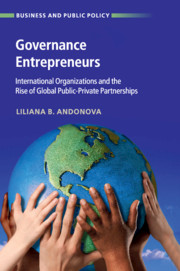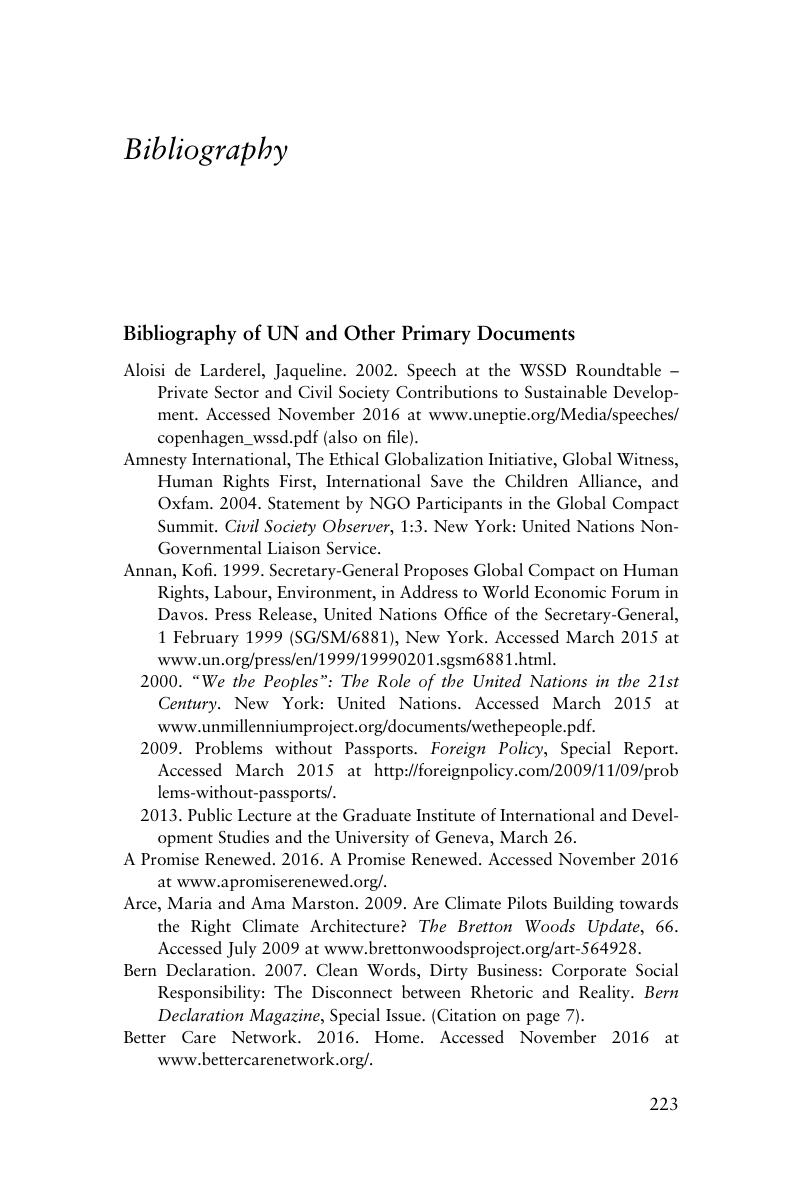 Governance Entrepreneurs
Governance Entrepreneurs Book contents
- Governance Entrepreneurs
- Business and Public Policy
- Governance Entrepreneurs
- Copyright page
- Contents
- Figures
- Tables
- Acknowledgments
- 1 Introduction – Global Partnerships
- 2 Theory of Dynamic Institutional Change
- 3 The UN Secretariat
- 4 UNEP and the World Bank
- 5 Partnerships for Children and Health
- 6 Conclusion
- Annex Constructing the Global Partnerships Database
- Bibliography
- Index
- References
Bibliography
Published online by Cambridge University Press: 31 October 2017
- Governance Entrepreneurs
- Business and Public Policy
- Governance Entrepreneurs
- Copyright page
- Contents
- Figures
- Tables
- Acknowledgments
- 1 Introduction – Global Partnerships
- 2 Theory of Dynamic Institutional Change
- 3 The UN Secretariat
- 4 UNEP and the World Bank
- 5 Partnerships for Children and Health
- 6 Conclusion
- Annex Constructing the Global Partnerships Database
- Bibliography
- Index
- References
Summary

- Type
- Chapter
- Information
- Governance EntrepreneursInternational Organizations and the Rise of Global Public-Private Partnerships, pp. 223 - 264Publisher: Cambridge University PressPrint publication year: 2017


